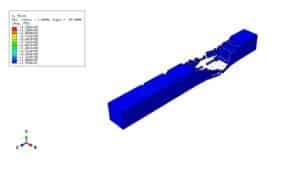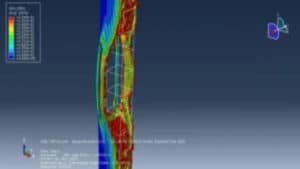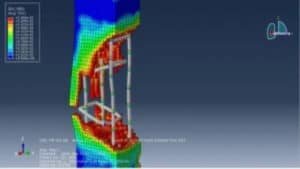



undefined








Papers abstract:
Concerns have risen from building responses and resulting fatalities in some recent infamous terrorist attacks. The collapse of the Alfred P. Murrah Building, for instance, revealed that failure of loadbearing members could lead to extensive building failure. It has become imperative to investigate the blast resistance offered by loading-bearing structural members designed for gravity loads and other load types such as earthquakes.
Reinforced concrete (RC) columns not forming part of the seismic force resisting system were detailed according to CSA A23.3-04 – Design of Concrete Structures. Using a high-fidelity physics-based finite element code, LS-DYNA, a numerical study was undertaken to investigate the effects of transverse reinforcement spacing on the blast resistance of RC columns.
The study shows that the effect of transverse reinforcement spacing and axial loading significantly affects RC column behavior under blast loading at low scaled distances. At higher scaled distances, however, the effects were insignificant.
Product Overview:
This package provides a complete finite element simulation setup to analyze blast effects on reinforced concrete columns using the Coupled Eulerian-Lagrangian (CEL) approach. The model follows the ISI research paper’s methodology and includes all necessary files for running the simulation in Abaqus. Key simulation steps include:
In this tutorial, effects of transverse reinforcement spacing on the response of reinforced concrete columns subjected to blast loading are simulated according to data from the work of Kyei and Braimah.
We connect engineers through:

Want to receive push notifications for all major on-site activities?